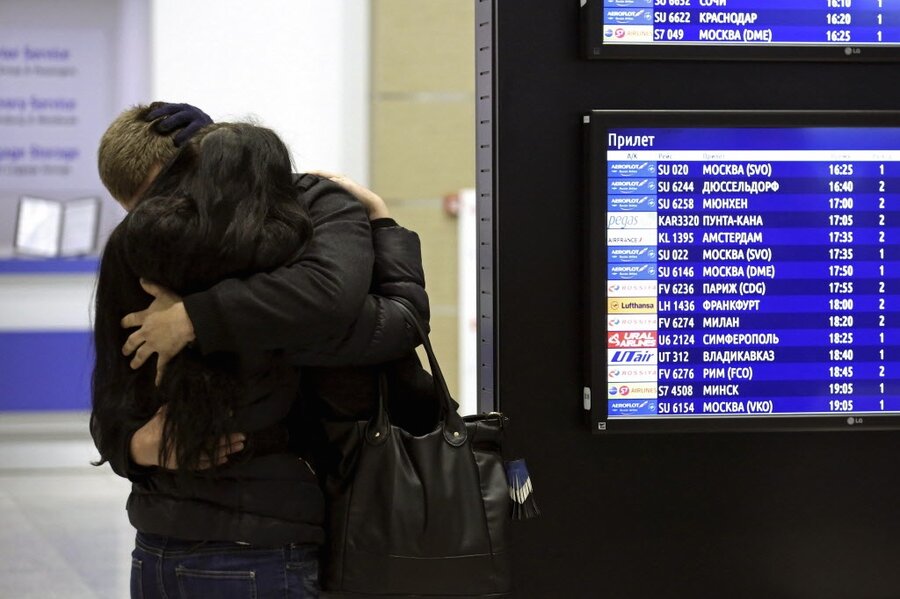Russian plane crash in Sinai: An anomaly in era of safer air travel
Loading...
A Russian plane carrying 224 passengers crashed on Saturday morning while flying over the Sinai in Egypt, raising questions about aviation security.
The plane, an Airbus-321 operated by Kogalymavia, a private Russian airline, reported technical difficulties just before it lost contact with air traffic controllers. Authorities are still investigating the causes of the crash, one of the worst in the history of Russian airlines.
Due to worldwide publicity, it may seem like this is one of a growing number of commercial plane crashes in recent years.
For example, an Indonesian military transport plane crashed into a residential area of Indonesia in June, killing all 122 on board and 19 on the ground. A few months earlier, a German Airbus A320 crashed in the French Alps, killing all 148 on board.
In 2014, six major crashes were reported: an Indonesian flight to Singapore and its 162 went missing over the Java sea in December, 116 passengers on Air Algerie died on a flight to Mali in July, pro-Russian rebels shot down a Malaysia Airlines flight carrying 298 passengers above eastern Ukraine, and debris was recently found from the Malaysia Airlines flight that disappeared in the south Indian Ocean.
These events are tragic, but statistics show that air travel is significantly safer now than ever before. In fact, according to a report by safety analysts at Ascend, 2014 was the safest year ever, with one major accident for every 2.4 million flights.
That represents a tremendous improvement over the early years of air travel. 1944 saw the highest-ever number of plane crashes in one year, with more than 900 fatal crashes, followed by 1943, with 781 crashes. But those planes were small; larger planes mean more fatalities per crash. Statistically, the least safe time to fly was in the 1970’s, which had a median casualty rate of 2,500 deaths per year.
Then came stricter global standards for airline safety.
The International Air Transport Association (IATA) raised international standards for safe aviation and created a registry of airlines that met them. Currently, the IATA has cleared 256 airlines in 117 countries.
In part, aviation safety has improved because technology has improved: a past generation of crashes has birthed a new generation of airplane models. Additionally, a series of more stringent measures and security checks pre-boarding has reduced the risk of in-flight terrorist attacks, though critics denounce some measures as "security theater."
While the causes of this weekend’s Russian crash are still being investigated, a branch of the so-called Islamic State is claiming responsibility.
"We live in an increasingly complex world where the threat of terrorism is a fact," acknowledged Tony Tyler, IATA's director general and CEO, at an aviation safety conference earlier this week.
"This year airlines will move 3.5 billion passengers and over 50 million tonnes of cargo," he said. "Doing that safely means not only getting from A to B without technical incident, it also means keeping the network secure from those who would do it harm."
And the vast majority of the time, Mr. Tyler noted, they succeed. "As an industry we can be proud that there is no safer form of long-distance transport."






